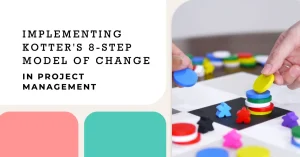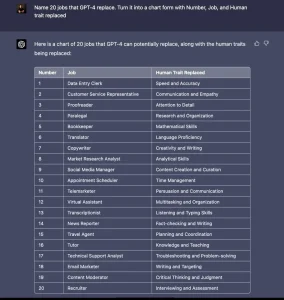To find out how Artificial Intelligence is changing the Project Management landscape, you may enjoy reading this article https://www.shaunstoltz.com/did-artificial-intelligence-just-change-everything-about-project-management/
I. Introduction
In the dynamic world of business, portfolio management has become a crucial function to ensure strategic alignment of projects, optimal use of resources, and maximum value delivery. This critical role falls into the competent hands of portfolio managers, who take on the hefty responsibility of making informed decisions on project prioritization, risk management, and stakeholder communication. However, as more organizations pivot towards Agile methodologies, the role of the portfolio manager is evolving, requiring a fresh understanding and unique skill set.
This article delves into the heart of the Agile portfolio manager’s role, exploring how it contrasts with traditional portfolio management and outlining the distinct responsibilities and skills required for success in Agile environments. Through this exploration, we aim to unravel the intricacies of Agile portfolio management, offering valuable insights to those looking to adapt to or understand this transformative approach better. Whether you’re a seasoned portfolio manager adjusting to Agile or a newcomer to the field, this article promises to shed light on the path ahead.
Stay with us as we embark on this exciting journey into the world of Agile portfolio management, where flexibility rules, change is embraced, and the path to value is incremental and iterative. The landscape of portfolio management is changing—are you ready to adapt?
II. Understanding Agile and Traditional Portfolio Management
Before we delve into the nuances of Agile portfolio management, let’s take a step back and examine the broader picture. At the heart of portfolio management, regardless of approach, lies the strategic alignment of projects and resources to ensure optimal value delivery. Yet, the methodologies employed to achieve this goal can be strikingly different, as we shall see when comparing Agile and traditional portfolio management.
Traditional Portfolio Management
In traditional portfolio management, often associated with the waterfall model, projects are meticulously planned upfront, with a clear start and end, defined stages, and an expected outcome. This approach values predictability and control, with portfolio managers orchestrating a carefully crafted plan, often resistant to change once it’s in motion.
Agile Portfolio Management
Agile portfolio management, on the other hand, flips this model on its head. It takes a flexible, iterative approach where change is not only expected but welcomed. The Agile portfolio manager works within a dynamic environment, where the course of projects can pivot based on customer feedback, market changes, or internal shifts. The focus here is on delivering value incrementally, with regular reviews and adjustments, fostering a culture of continuous learning and adaptation.
Comparing the Two
When comparing Agile and traditional portfolio management, we see a fundamental shift in perspective. From a rigid, plan-focused approach, we move to a flexible, value-driven methodology. While traditional portfolio management can provide a sense of security with its detailed plans and defined outcomes, it may fall short in today’s fast-paced, unpredictable business landscape. Agile portfolio management, with its inherent flexibility, offers a resilient alternative, ready to navigate the uncertainties and complexities of the modern business world.
Transitioning from Traditional to Agile
The transition from traditional to Agile portfolio management is not merely about swapping techniques—it’s a cultural shift. It’s about embracing uncertainty, fostering a collaborative environment, and prioritizing customer value over rigid plans. It’s about being ready to adapt, learn, and grow in the face of change. This transition isn’t easy, but for organizations looking to stay competitive in a rapidly evolving market, it’s becoming increasingly essential.
In the following sections, we will explore the role of the Agile portfolio manager in detail, shedding light on the unique responsibilities and skills required for success in this exciting new landscape. Stay tuned as we dive deeper into the world of Agile portfolio management.
III. The Agile Portfolio Manager: An Overview
In the fast-paced and ever-evolving Agile environment, the role of the portfolio manager takes on a unique dimension, a paradigm shift from the traditional portfolio management approach. Let’s take a closer look at this pivotal role and understand how it shapes the Agile landscape.
The Agile portfolio manager, much like their counterpart in a traditional setup, oversees the portfolio of projects, ensuring alignment with the organization’s strategic objectives. But here’s where the similarity ends and the Agile difference comes into play.
In an Agile environment, the portfolio manager isn’t just a conductor, executing a pre-determined symphony. They are more like an adept jazz musician, improvising and adapting the melody to the rhythm of the market and the organization’s heartbeat. They are constantly tuned into the dynamic business environment, ready to respond to changes and orchestrate the portfolio in a way that maximizes value delivery, even if it means deviating from the original plan.
Compared to the traditional portfolio manager, the Agile counterpart operates in a more fluid environment, where projects are not rigidly defined but are flexible, adaptive, and customer-focused. This role requires a delicate balance of strategic oversight and tactical flexibility. The Agile portfolio manager needs to maintain a clear vision of the strategic goals while staying flexible enough to adapt the path to these goals as circumstances change.
In essence, the Agile portfolio manager acts as a bridge, linking strategic objectives with Agile teams’ work, while fostering a culture of collaboration, continuous learning, and adaptation. They work closely with teams to ensure they have a clear understanding of the portfolio’s strategic direction and can pivot their efforts to deliver the most value.
This shift from a strictly controlled, plan-driven approach to a more dynamic, value-driven approach requires a new mindset and skill set, which we will explore in the upcoming sections. As we continue our journey through the world of Agile portfolio management, we hope to equip you with the knowledge you need to navigate this exciting landscape.
IV. Key Responsibilities of an Agile Portfolio Manager
As we delve deeper into the world of Agile portfolio management, it’s time to outline the key responsibilities that define the Agile portfolio manager’s role. This is where the rubber meets the road, where the Agile principles and practices come alive through the actions of the Agile portfolio manager.
1. Project Selection and Prioritization
In Agile environments, project selection and prioritization are fluid, ongoing activities. The Agile portfolio manager constantly assesses projects based on their strategic value, potential risks, and available resources. This process is not a one-time event, but a continuous cycle of evaluation and reevaluation, ensuring the portfolio stays aligned with the organization’s evolving strategic goals.
2. Risk Management
Agile portfolio management embraces uncertainty and uses it as a lever for innovation and improvement. The Agile portfolio manager is responsible for identifying potential risks and establishing strategies to manage them. This involves a proactive approach, continuously assessing the portfolio’s risk landscape and adjusting plans accordingly to mitigate any negative impacts and leverage opportunities.
3. Stakeholder Communication and Management
Maintaining open lines of communication with stakeholders is another key responsibility of the Agile portfolio manager. They must keep stakeholders informed about the portfolio’s status, the progress of individual projects, and any changes in strategic direction. In addition, they should foster a collaborative environment where stakeholders feel comfortable providing feedback, thus ensuring that the portfolio remains customer-focused and value-driven.
4. Monitoring and Controlling Portfolio Performance
An Agile portfolio manager must continuously monitor the portfolio’s performance to ensure that it’s delivering maximum value. This involves tracking key performance indicators (KPIs), such as value delivery, customer satisfaction, and resource utilization, and adjusting plans as necessary. It’s a balancing act, maintaining alignment with strategic goals while adapting to changes in the business environment.
The responsibilities of an Agile portfolio manager are both challenging and exciting, requiring a blend of strategic thinking, tactical flexibility, and excellent communication skills. These responsibilities also necessitate a unique skill set, which we will explore in the next section. As we continue our journey into Agile portfolio management, we hope to provide you with the insights you need to thrive in this dynamic role.
V. Necessary Skillset for Agile Portfolio Managers
As we’ve seen, the role of the Agile portfolio manager is demanding and multifaceted, requiring a unique blend of skills to navigate the dynamic Agile environment successfully. Let’s explore some of the essential skills that an Agile portfolio manager should possess.
1. Understanding of Agile Principles and Methodologies
First and foremost, an Agile portfolio manager must have a deep understanding of Agile principles and methodologies. This includes knowledge of various Agile frameworks such as Scrum, Kanban, or Lean, and understanding the value of flexibility, iterative development, and customer-centric decision making. This foundational knowledge is crucial for making informed decisions and guiding teams through the Agile journey.
2. Leadership and Team Management Skills
Agile portfolio managers must exhibit strong leadership skills, fostering a collaborative environment where teams feel empowered to innovate, experiment, and learn. They should be able to facilitate communication, resolve conflicts, and build a culture of trust and transparency. Moreover, they need to manage teams not with rigid control, but with guidance, support, and a clear focus on the strategic vision.
3. Strategic Decision-Making Abilities
The Agile portfolio manager is at the helm of strategic decision-making, making choices that align with the organization’s broader goals while navigating the shifting currents of the business environment. They must have the ability to analyze complex information, identify trends, and make informed decisions that balance immediate needs with long-term objectives.
4. Excellent Communication Skills
Effective communication is key in Agile environments. The Agile portfolio manager must be adept at conveying complex information in an accessible way, facilitating open dialogue, and ensuring that everyone—from team members to stakeholders—understands the portfolio’s strategic direction and the value of individual projects.
5. Ability to Manage Uncertainty and Change
Agile portfolio management thrives on change and uncertainty. Agile portfolio managers must therefore be comfortable with ambiguity, demonstrating resilience and adaptability in the face of changing circumstances. They should view challenges not as obstacles, but as opportunities for learning and improvement.
The Agile portfolio manager’s role is not for the faint of heart. It requires a unique blend of skills, a deep understanding of Agile principles, and a mindset that embraces change and uncertainty. But for those who rise to the challenge, it offers the opportunity to drive meaningful change, deliver real value, and shape the strategic direction of an organization. In the next section, we’ll look at how these skills and responsibilities come together in a real-world scenario. Stay tuned as we continue our exploration of Agile portfolio management.
VI. Case Study: Agile Portfolio Management in Action
To fully appreciate the role and impact of an Agile portfolio manager, let’s examine a real-world scenario. This case study will illustrate how the principles of Agile portfolio management are put into practice and the transformative effect they can have on an organization.
The Challenge
TechEdge, a global technology company, had always followed traditional portfolio management practices. However, with the rapidly changing technology landscape and increasing market competition, they found their traditional approach was falling short. Projects were delivered late, over budget, and often failed to meet the changing customer needs. TechEdge realized they needed to adopt a more flexible, adaptive approach to portfolio management. This is where the Agile portfolio manager came into play.
The Transformation
Upon her appointment, the new Agile portfolio manager, Maya, brought a fresh perspective. With a deep understanding of Agile principles and methodologies, she began implementing changes.
First, Maya transitioned the project selection and prioritization process from a static, one-time event to a dynamic, continuous cycle. This allowed TechEdge to adapt to changing market trends and customer needs, ensuring that the portfolio always delivered maximum value.
Next, she implemented a proactive approach to risk management, continuously assessing potential risks and adjusting plans accordingly. This led to fewer surprises and better project outcomes.
One of Maya’s most significant changes was improving stakeholder communication. She prioritized transparency and collaboration, keeping stakeholders informed and involved. This led to improved stakeholder satisfaction and better alignment between the portfolio and the organization’s strategic goals.
Finally, Maya implemented a system for continuous monitoring and controlling of portfolio performance. This enabled TechEdge to track key performance indicators and adjust plans as necessary, further enhancing value delivery.
The Outcome
Through Maya’s leadership, TechEdge saw a dramatic improvement in their portfolio management. Projects were delivered more efficiently and effectively, customer satisfaction increased, and the organization was better equipped to navigate the ever-changing technology landscape. The role of the Agile portfolio manager proved to be pivotal in this transformation, demonstrating the power of flexibility, adaptation, and customer-centric decision making.
This case study underscores the transformative potential of Agile portfolio management. As we conclude our exploration in the next section, we hope that you’re feeling inspired and equipped to embrace the Agile approach in your own organization.
VII. Conclusion
As we reach the end of our exploration into Agile portfolio management, let’s take a moment to reflect on the journey we’ve undertaken. We’ve examined the unique role of the Agile portfolio manager, compared it to its traditional counterpart, and delved into the distinct responsibilities and skills required in Agile environments. Through our case study, we’ve seen these principles in action, highlighting the transformative potential of Agile portfolio management.
The role of an Agile portfolio manager is both challenging and rewarding. It calls for a blend of strategic oversight and tactical flexibility, a deep understanding of Agile principles, and a readiness to adapt and learn in a dynamic business environment. It’s about leading with vision, managing with empathy, and navigating change with resilience.
Embracing Agile portfolio management is more than just adopting a new set of tools or techniques—it’s about fostering a culture of collaboration, continuous learning, and customer-centricity. It’s about being ready to adapt, innovate, and deliver value in an ever-evolving business landscape.
Whether you’re a seasoned portfolio manager transitioning to Agile or a newcomer intrigued by the possibilities of Agile portfolio management, we hope this exploration has provided valuable insights and sparked your curiosity to learn more.
The Agile journey is one of continuous learning and growth. So, as we conclude, we encourage you to keep exploring, keep learning, and keep pushing the boundaries of what’s possible in portfolio management. The future is Agile—are you ready to step into it?
Find out more about Shaun Stoltz https://www.shaunstoltz.com/about/ This post was written by an AI and reviewed/edited by a human.



